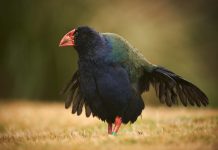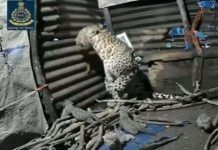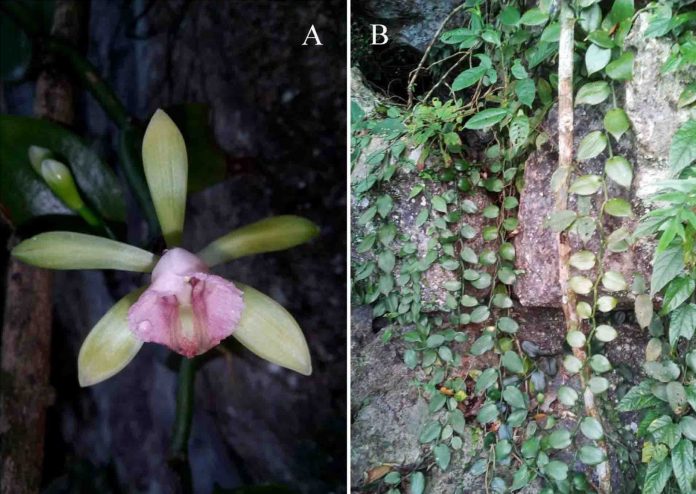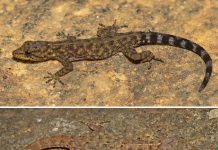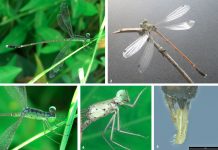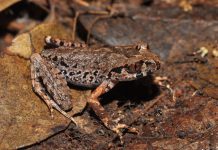Vanilla tiendatii is a newly discovered species for science from Limestone Mountain (elevation 300–400 m a.s.l.) of Quang Binh province in North Vietnam. This species appears to be closely related to V. yesiniana and V. albida, in morphologically, but well differs in the flower color, leaf shape, lip densely papillate-hairy at apex, and column fimbriate-hairy in the basal half.
The genus Vanilla (orchidaceae) described in 1754 by Miller, which includes 100–107 species with pantropic distribution. It belongs to the subfamily Vanilloideae Szlachetko, tribe Vanilleae and all species of this genus are terrestrial. Previously four species of the genus were reported in the flora of Vietnam, Vanilla albida, V. annamica, V. aphylla, and V. siamensis. Later, listed 3 species of Vanilla in Vietnam, V. aphylla, V. yersiniana, and V. siamensis, removing V.annamica and V. somai into the newly described genus Miguelia which presently includes three species in Vietnam – Miguelia annamica M. cruenta and M.somai. The genus Miguelia is closely related to Vanilla but well differs in its inflorescence details, fertile bracts, and flowers.
After that, one species of the above stated “true” Vanilla, V. atropogon was discovered in Vietnam and described recently. Five species of Vanilla s. str. are now reported from Vietnam, with the newly discovered plant.
In this new species, Flowers open in succession and shortlived. Cephal and tablets free and spreading; Petals usually opposite with median keel; the trumpet-shaped, sepals and petals yellowish-green, lip basally light pinkish, pink at apex, with pink red papillate hairs. The fruit is a fleshy capsule or berry. lithophytic, or epiphytic climbers with thin or thick creeping stems. Stem simple or little branching, up to 7 m long, 5–8 mm in diameter. Leaves glossy green, ovate or broadly elliptic.
The researchers found that the juice of this new plant species can cause allergies that manifest as strong skin itching.
Further field studies are needed for determination of this species current conservation status. The reason is, the new species is locally common but seriously disturbed by agriculture activities at foothills. At present, tentatively assessed as “Data Deficient” (DD) according to the IUCN criteria (IUCN, 2019).
Cover Photo – Bui Tien Dat.





